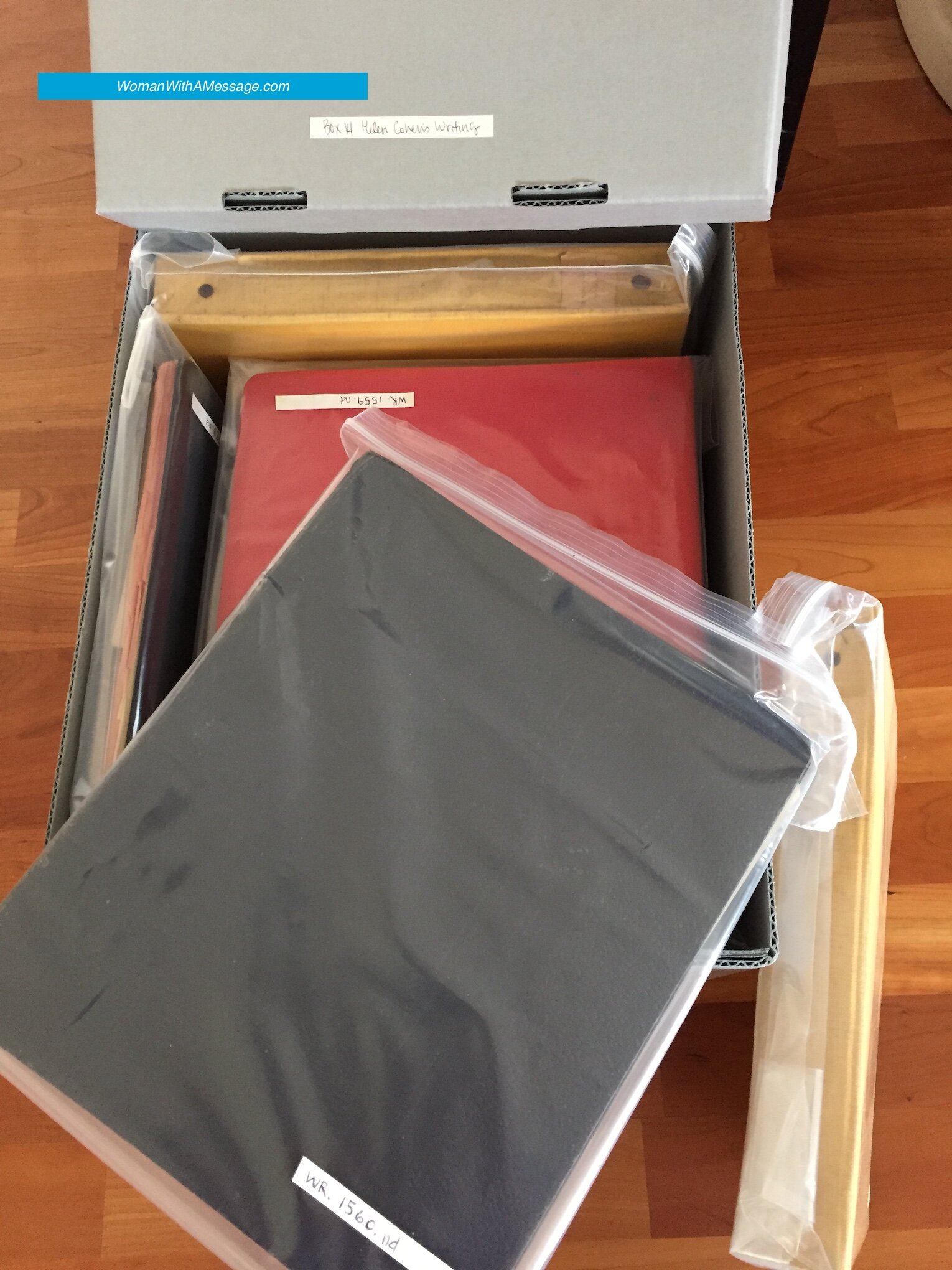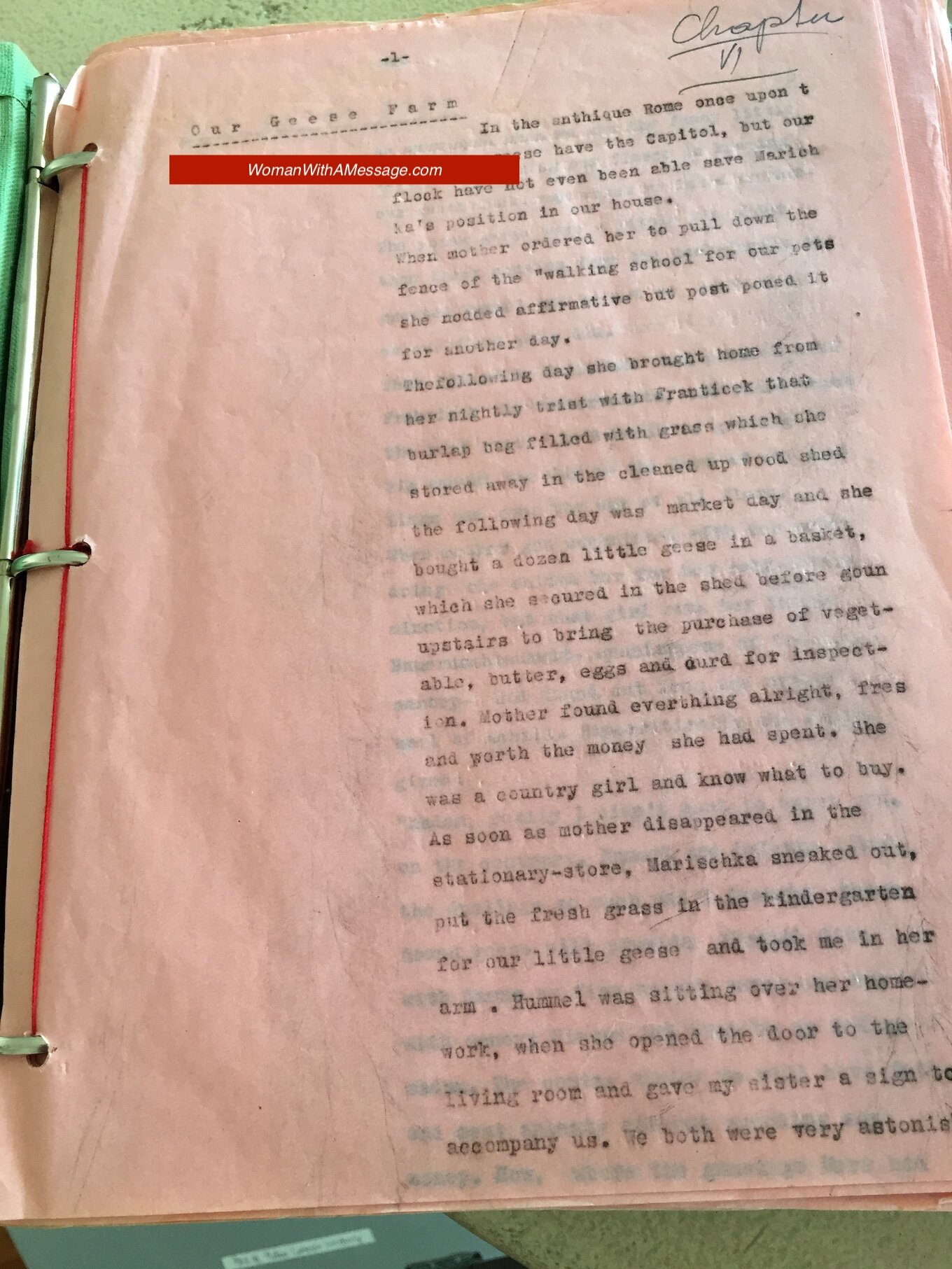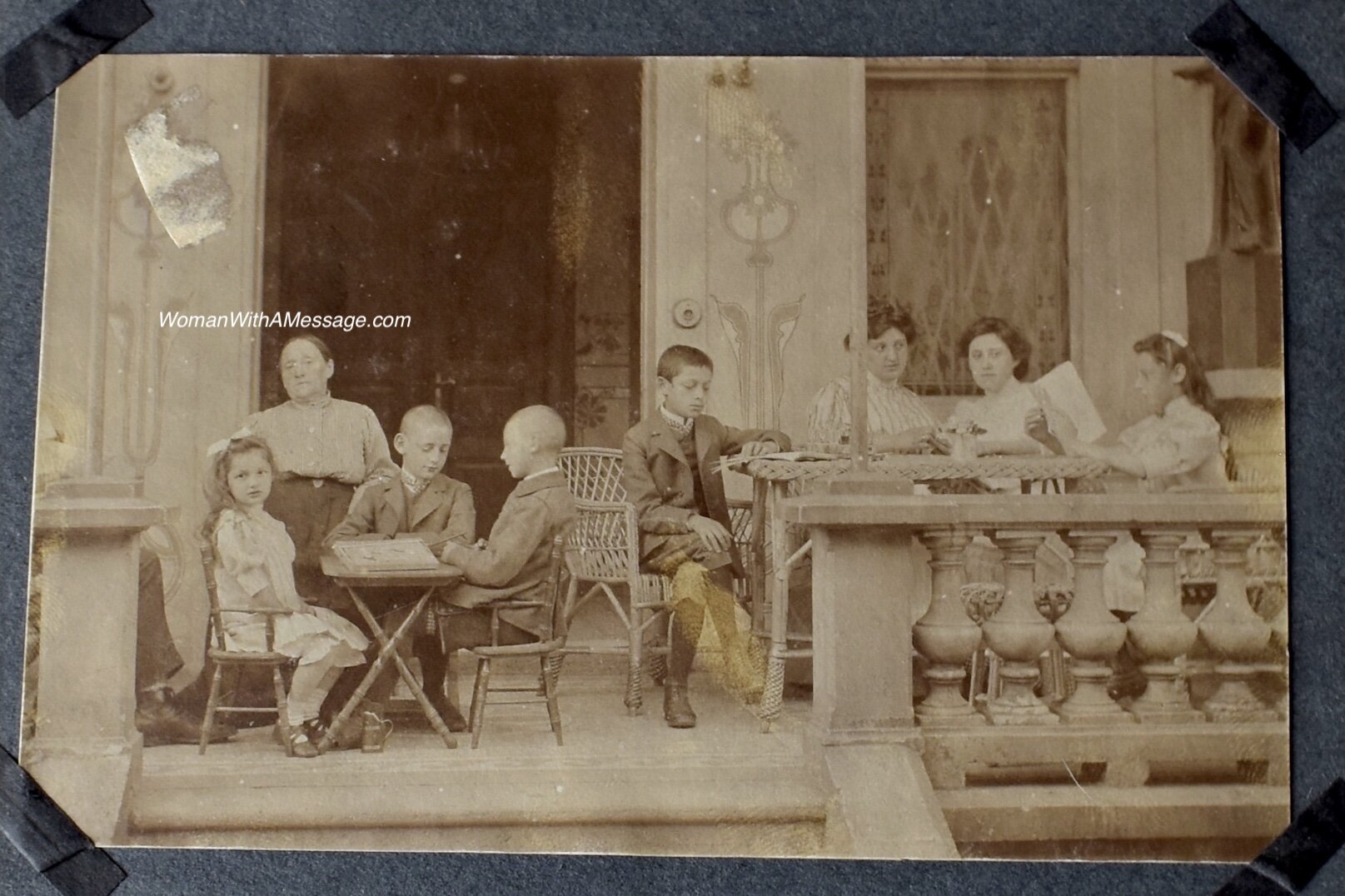My mother and her brother did not encourage their children to ask questions about the past. My uncle was a sunny optimist who didn’t want to discuss the past, which would bring up painful memories. I have no idea how much guilt they may both have had for having been unable to save their parents from the camps, despite the fact that they were teenagers without resources and had done the best they could.
As psychological theories evolved, my mother had a new source of guilt after her mother died when “talk therapy” came into vogue. When my grandmother first arrived in the U.S., the prevailing theory was that talking about painful events would only make the situation worse. My mother told me that she would always change the subject if my grandmother wanted to talk about all she’d been through.
Giving Helene the tools to tell her story
As I described in the “Hidden Treasures” section, I have been sifting through an enormous amount of material and am sometimes daunted by the process. One part of my grandmother’s papers has truly overwhelmed me, as it did my mother.
At some point in the 1940s or 1950s, my uncle bought Helene a typewriter and encouraged her to write down her stories to get them out of her system. My grandmother was obedient to her son’s encouragement and began writing. She wrote and wrote and wrote.
This was before computers or even electric typewriters and she was using an English keyboard which didn’t have German diacritical marks, so it must have been slow going. No cutting and pasting, no copying from previous drafts. I do not know whether she began by writing her drafts in longhand, but she kept many versions of some of her typed stories and it’s not always clear which version, if any, is the final draft.
Although she fictionalized her maiden name and a few other surnames, it appears that the stories themselves were what she recalled and were not fictionalized.
She produced at least a dozen binders worth of writing:
My mother had the best of intentions and wanted to go through the binders, translating stories from German, and organizing the writing so there weren’t multiple versions of the same story. But she never managed to do it (and as with everything, probably had a fair amount of guilt about it). I don’t blame her! Although I have had these binders for a few years, I too have avoided trying to make sense of their contents. When Kelsey created the archive, I handed the binders over to her and asked her to come up with some sort of order so I wouldn’t have to.
Only now have I been able to begin the process of reading and transcribing Helene’s stories and it is slow going. I cannot imagine how my mother would have managed with just a typewriter herself.
Helene made do with whatever she could find to keep things organized, sometimes gluing paper on the spine to show the contents:
Apparently she ran out of paper clips and didn’t have a stapler, so some stories are bound together by string:
As I begin to read her papers, I am finding that Helene’s writing continues to answer my questions. Unfortunately some of the stories listed on the binder spines didn’t end up in the binders, so at least a few that I would have loved to read are missing (for example, a story about moving to Vienna and one about her first job).
One question I’d been trying to figure out how to answer over the past few months — particularly in this time of shelter in place when going to libraries is impossible — was the population of Bilin (now Bilina), the town my grandmother lived in until at least her late teens. On the JewishGen site, I discovered that approximately 75 Jews lived in Bilin in 1900. However, I could not figure out how to find out the total population of the town. Last week, I transcribed a story Helene wrote entitled “Dandelions in May 1902”. In the story she describes a momentous year where family life was turned upside down by the death of her eldest sister. In telling the story, she mentions that at that time the town had about 6000 inhabitants (according to Wikipedia, currently approximately 17,000 people live there). Question answered!
Although there are hundreds of photos, I do not always know who is in the picture. Unfortunately when I was ready to sit down with my mother for her to help identify people in the photos, she was no longer able to do so. Although Harry often talked of our looking at the photos together, there was always some excuse not to do so. Toward the end of his life, I realized we would never know the identity of people in the photos. In general that’s true. However, my grandmother’s writing is helping identify people as well.
In addition to photos my mother and uncle brought over themselves, they also had Paul Zerzawy’s photos which they got after he died in 1948 in San Francisco. My mother had his photo album and Harry had a box of miscellaneous photos and papers.
Below is a photo from Paul Z’s photo album:
In the above photo, I recognized my grandmother (second from the right) and her mother (older woman at the back on the left). Since it was in Paul’s album, I figured it was a photo of he and his siblings but I did not know the identity of the woman sitting next to my grandmother. I was able to piece it together and understand a rich story using two items from the archive: the story “Dandelions in May 1902” from Helene and the Zerzawy Family tree from Paul which was created in the 1920s or so.
From the family tree, we learn that there were 4 Zerzawy siblings born to Julius Zerzawy’s first wife Ida (Helene’s oldest sister): Paul, Klara, Erich, and Robert. Ida died in 1902. Her sister Mattl married Julius in 1903 and gave birth to a fifth child Käthe in 1904. Thus, I assume that since there are 5 children in the photo, the woman next to Helene is her sister Mattl who died in 1910. The youngest girl looking at the camera (and us) must be Käthe. Which means that the photo was probably taken around 1908-1910.





